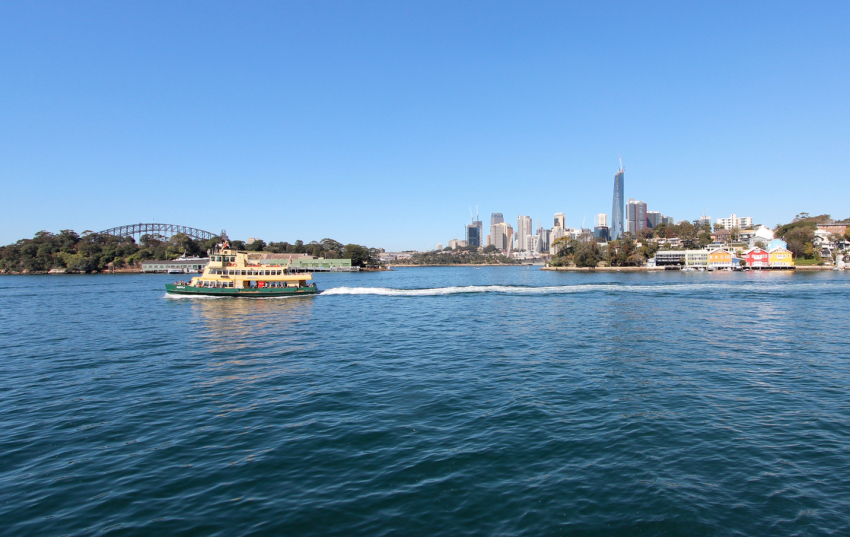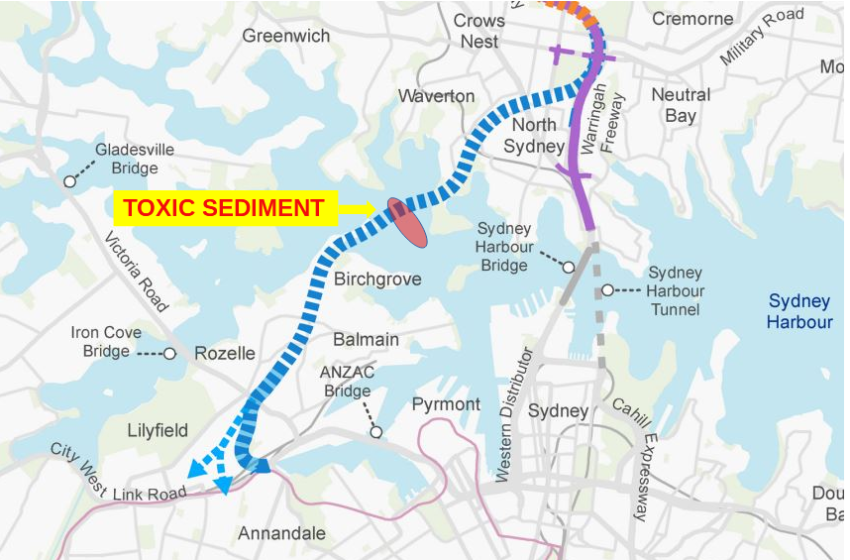
You wouldn’t think looking out across Sydney Harbour from Yurulbin Point on the Balmain Peninsula that beneath the sparkling azure water lies a toxic time bomb.
The New South Wales Coalition government is determined to build the Western Harbour Tunnel (WHT) on a path right through one of the most toxic sedimentary deposits in Australia, a legacy of decades of shipbuilding and other industrial activity. This risks poisoning the harbour, leading scientists have warned in submissions to an ongoing parliamentary inquiry into the project.
“The mixture of contaminants in the sediments includes banned and poisonous chemicals that are carcinogenic to humans, and dioxins and biocides such as copper and tributyltin [TBT], which are highly damaging and, in fact, cause instant death to many marine animals”, Professor Maria Byrne from the Australian Marine Sciences Association told the parliamentary inquiry on September 17.
Byrne presented evidence from her research, as well as that of another marine biologist, Dr Patricia Hutchings. These experts have undertaken extensive work on Sydney Harbour for the Sydney Port Authority and the Sydney Olympic Park development.
Byrne told the enquiry: “The environmental impact statement (EIS) and submissions report did not sufficiently consider the impacts of construction of the immersed tube tunnel (ITT) to the marine environment and species throughout Sydney Harbour caused by the redistribution of contaminated and non-contaminated sediments.

“Highly toxic chemicals will be released from the fine particles and certainly from the sediment pore water, and the release of a potentially toxic cocktail into the water was not at all considered.
“It is well known that the harbour sediments have high levels of contaminants. These are persistent; they will be with us for hundreds of years and we cannot do anything about that. This includes sediments in the corridor of the tunnel in the construction support sites, and this was shown in the contaminants report — the Golder-Douglas report of 2017. This report was kept confidential during the EIS stage. This demonstrates lack of transparency.”
Retired scientist Dr William Ryall told the inquiry that almost 1 million cubic metres of sediment, “approximately 400 Olympic swimming pools of sediment”, is going to be dredged up to excavate a trench in which to lay the tunnel tubes.
“Of that, the EIS states that 142,500 cubic metres of this sediment is contaminated. This aspect of the EIS is totally wrong”, he said, “it is a fraction of what the EIS says”.
The EIS said that the management and minimisation of sediment dispersion into Sydney Harbour will be maintained by shallow silt curtains two to three metres from the surface.
However, Ryall said that the water depth within the alignment of the ITT ranges from 11 to 15 metres and disturbance of the sediment would take place at the sea floor, which is some eight metres below the level of the silt curtain.
The scientists warned that the EIS has failed to assess the impact of strong currents in this part of the harbour on any disturbance of the toxic sedimentary bed.
“There is no way that the silt curtains and the backhoe dredge will contain the sediments because the area is dynamic with strong water movement. The tunnel construction will disturb the sediments, and the movements between Berrys Bay, Snails Bay, White Bay and the Rozelle Rail Yards have a high potential to disturb and redistribute sediments. Measures to contain and track those plumes are not convincing, nor is the assumed loss of fine sediments. There is no measure to monitor contamination in the water”, Ryall said.
The EIS outlines a plan to take the dredged-up sediment to nearby White Bay, which is surrounded by relatively high-density housing, to be dried out before being disposed in landfill or in the ocean.
“Offshore disposal is also of great concern”, said Byrne. “There were additional analyses that were commissioned for the Commonwealth, but this information was not provided. We have particular concerns for the contaminated sediments by dioxins and tributyltin and how they will be managed with respect to offshore dumping in White Bay on barges. That containment needs careful management. In summary, it is clear that there have been procedural deficiencies with the WHT process, including an inadequate EIS, incomplete environmental risk analysis with respect to the marine environment and lack of transparency.”
Byrne warned that the tunnel project “risks the reversal of all these positive gains we have had for our very, very iconic Sydney Harbour”.
The scientists also criticised the NSW Environment Protection Authority for failing to carry out a sufficiently critical review of the EIS, particularly on the toxic sediment in the path of the proposed tunnel trench.